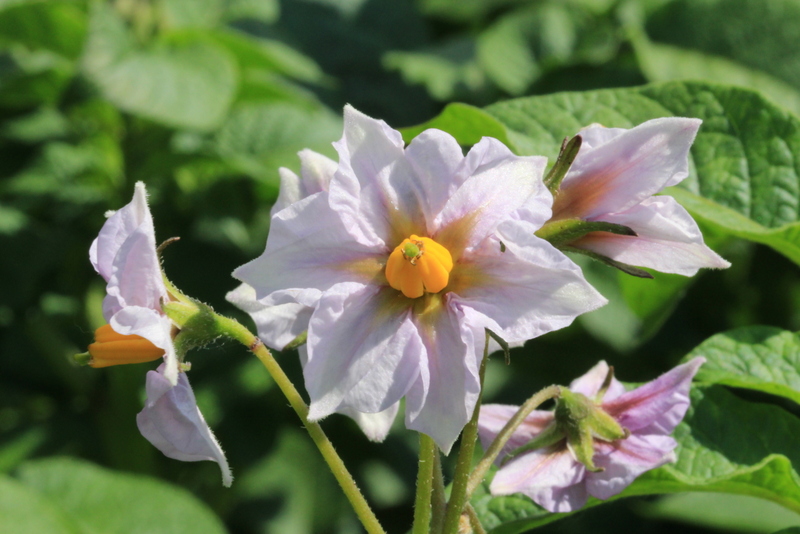Potato Extension
Insights from Israel
In November I flew to Israel and attended the European Association for Potato Research pathology meeting in Jerusalem. Potatoes are the most important vegetable grown in Israel and are an important crop in the Negev desert region in the southern part of Israel. Being a desert region rainfall is between 1 and 12 inches per year and potato production requires irrigation. For more pictures from my trip to Israel go to the NDSU / U of M Potato Extension Facebook page at www.facebook.com/potatoextension.
2013 Seed Potato Crop is Less than 2012
Across the nation there was an 8.7% reduction in seed acres planted from last year. Seed potato production in North Dakota was reduced 2%, or by 282 acres and Minnesota acres planted for seed was reduced by 13% or 697 acres when compared to last year. Although there will be less seed available for 2014, the 2013 crop in North Dakota and Minnesota seems to have good quality.
Avoiding Herbicide Damage in Seed Potatoes
I am commonly asked, how do I prevent getting seed potatoes with herbicide damage? In this article I will address some measures to identify and avoid seed potatoes with herbicide residues.
Demand increasing for reds at retail, foodservice
A good article from The Packer on how red potatoes are being utilized more in food services and as a fresh potato.
Commodity-Specific Food Safety Guideline For the Production, Harvest, Storage, and Packing of Potaotes
The Commodity-Specific Food Safety Guidelines for the Production, Harvest, Storage, and Packing of Potatoes is available for industry members to help ensure the continued safety of U.S.-grown potatoes.
2013 Seed Directories for MN and ND available
The 2013 potato seed directories for Minnesota and North Dakota are now available. They include the cultivars grown, acres, and growers.
Aphid Alert - Samples Identified up to August 28th
Extreme vectors numbers in some locations!!! Aphid in several locations showed very high catches in the past week. Traps at Walhalla (101) and Hoople (165) and Staples (102) recovered from 2x to 5x their cumulative season's catch in just 1 week! Other locations also trapping higher numbers of aphid vectors than in past weeks were Cando (13) and Forest River (65), and Crookston (19). Gully recovered high numbers for the second week in a row (40). Non-vector aphid species were also numerous this week, indicating aphid dispersal was quite active.
Blightline August 27, 2013
Current recommendations: No additional late blight has been reported in our area. Late blight severity values have remained mostly unchanged at most locations, and conditions for late blight infection and spread has been unfavorable due to the continuing hot weather. We recommend to continue to scout fields for the presence of late blight and apply protectant fungicide applications until the end of the growing season to prevent late season infection that may occur if the weather becomes favorable for late blight. Concentrate scouting on low areas and along tree lines that stay wetter longer. It takes only 12 hours of wetness for late blight spores to infect.
Aphid Alert for Samples Identified up to August 23
While trap captures were still significant, the numbers captured at many locations were down this week (with 5 locations yet to be sorted and ID'd). The two sites that had increased captures (Gully and Perham) had big increases, in the case of Gully, most of these were bird cherry oat aphids. There were no green peach aphids recovered at this time but soybean aphids were recovered from traps in Hoople, Hatton, Forest River, and Linton, ND and Perham and Staples, MN. in most years, numbers of soybean aphids can be expected to increase and their distribution to broaden later in the season so these numbers are not surprising.
Blightline August 20, 2013
No additional late blight has been reported in our area. Late blight severity values have generally remained stable at all sites, and conditions have not been favorable for late blight infection and spread. It remains important to scout fields for the presence of late blight and continue protectant fungicide applications until the end of the growing season. Concentrate scouting on low areas and along tree lines that stay wetter longer. It takes only 12 hours of wetness for late blight spores to infect
Document Actions





